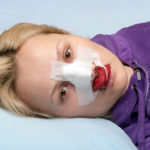[su_box title=”Here’s what you need to know…” style=”default”]
- Terrorism can occur anywhere in the world
- Most health insurance companies do cover injuries sustained during a terrorist attack
- Some injuries are not visible to the naked eye
[/su_box]
Injuries sustained as a direct result of terrorism are generally covered by most health insurance policies, although specifically, it depends on your state and the type of injury sustained. Most states stipulate that health insurance carriers provide coverage for many of the injuries associated with terrorism.
Property insurance companies and insurance companies that insure other companies, however, may try to get out of providing such coverage due to the potential for very high losses.
Start comparing health insurance in your area today!
What is the Terrorism Risk Insurance Act?
The U.S. government issued the Terrorism Risk Insurance Act (TRIA) in 2002 and it has since been extended to 2014.
The act aims to defray some of the costs of terrorist attacks by establishing a temporary federal program that covers part of the compensation if the event of a widespread attack with massive losses.
Even with the additional government assistance, commercial insurers may remain reluctant to cover all injuries associated with terrorist attacks, as reported by the United States Government Accountability Office.
NBCR are generally covered by health insurance as long as your policy contains a provision that covers associated injuries and, as with other injuries caused by terrorist attacks, most states require such coverage for health insurance carriers.
What injuries are common after a terrorist attack?
Injuries related to explosions are the most common during a terrorist attack,.
Explosions can cause blunt force trauma and other injuries from flying debris. Lacerations are common, as are injuries from impalement or impaction.
Abdominal injuries caused by the massive force exerted by the explosion are another possibility, most commonly seen in those in close proximity to the explosion.
Such abdominal injuries may be invisible to the naked eye and require internal investigation to reveal.
The lungs and central nervous system can also be affected by an explosion. Chest trauma can include bruising of the lungs, or contusions, as well as a collapsed lung due to air trapped between the lung and the chest wall.
Respiratory symptoms after a terrorist attack may be indicative of an injury that includes bruising and respiratory ailments from inhaling noxious dust and gases. The massive pressure exerted by the explosion can also cause the eardrums to tear.
Not every injury is immediately apparent. They may require closer observation or they may even develop later, after the explosion.
The nature and extent of injuries caused by an explosion depend on many factors. As with the abdominal injuries, nearness to the explosive device and the environment play a part in the type of injuries sustained.
They also depend on any surrounding environmental hazards, the type of materials used in the explosive device and the extent of the device’s power.
Nuclear, biological, chemical, or radiological methods of attack can result in contamination of the victims. The process of treatment typically involves observation and screening for contaminants and the decontamination of victims if evidence of contamination is found.
How are the injuries categorized?
Explosions have a lengthy span and stretch for producing injuries, Emedicine.com says, with the type of blast injury sustained fitting into one of four categories. These are:
- Primary blast injuries
- Secondary blast injuries
- Tertiary blast injuries
- Miscellaneous injuries, also called quaternary blast injuries
Primary injuries are those sustained due to the massive pressure of the blast on bodily tissue, such as the lungs, abdomen, and eardrums. Secondary injuries are those caused by the flying shrapnel or other debris.
Tertiary injuries are caused by flying through the air and striking down on the ground or other objects, normally the result of explosions with an extremely high amount of energy.
Injuries not covered by the first three categories fall into the quaternary category. They include inhaling poisonous gas, burn injuries, and being crushed by falling structures, as was the case with the World Trade Center.
How likely am I to be injured in a terrorist attack?
Although no one can predict when terrorists will strike, your likelihood of being a victim in a terrorist attack may increase if you are in a part of the world where they are common.
The United States has a comparatively infrequent history of terrorist attacks, but when they do strike, they can come with massive amounts of injuries, as was the case with the World Trade Center. The attacks have been historically sporadic.
Terrorist attacks across other regions of the world are also usually sporadic, although they can become increasingly regular in an area that is economically and politically unstable.
Nor is it possible to predict how many injuries or deaths may occur because of a terrorist attack, as each one is determined by too many variables.
Emedicine.com reports that 29 bombings that happened between 1966 and 2002 resulted in 903 deaths and 7,461 injuries, for a total of 8,364 overall casualties.
The largest amount of injuries and deaths were from the collapse of buildings or other structures, accounting for 25 percent of the casualties. Bombings in confined spaces accounted for 8 percent of the casualties and bombings in open air accounted for four percent of the casualties.
Enter your zip code today and start comparing health insurance in your area!
[su_spoiler title=”References:” icon=”caret-square” style=”fancy” open=”yes”]
- https://en.wikipedia.org/wiki/Terrorism_Risk_Insurance_Act
- https://www.researchgate.net/publication/45798779_Patterns_of_maxillofacial_injuries_caused_by_te…
- https://www.reference.com/science/types-environmental-hazards-84e69fddd9165185
- http://www.globalresearch.ca/the-terrorism-statistics-every-american-needs-to-hear/5382818
- https://en.wikipedia.org/wiki/List_of_terrorist_incidents,_2016
- https://www.healthcare.gov/choose-a-plan/plans-categories/
[/su_spoiler]





